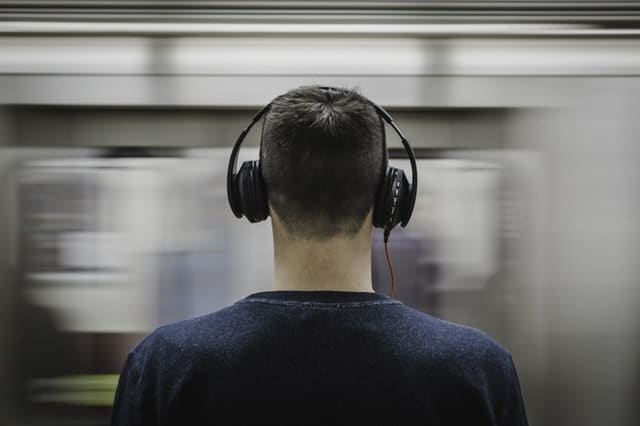If there’s a music aficionado in your life and you don’t know what to get for that person this Christmas, consider noise-cancelling headphones. They’re a gift that will keep giving by helping preserve that person’s hearing.
Passive vs. Active Technology & The Battle Against Noise

One out of five people in Redmond experiences hearing loss…and despite perceptions to the contrary, not all of them are old. In fact, age ranks as the second biggest contributing factor toward hearing loss. Noise is actually number one.
There are many ways in which noise can affect our hearing. Big events like concerts and sports games, exposure to construction equipment and power tools, and riding motorcycles or boats certainly take their toll, but more often than not it’s the cumulative effects of everyday noise exposure that lead to long-term hearing loss. People who listen to music through headphones or earbuds are particularly vulnerable.
Exposure to sounds louder than 85 decibels (dB) causes damage to the sensory cells of the inner ears. How quickly these cells are destroyed depends on how long you are exposed to noisy sounds. You can listen to music at 85 dB for about eight hours without harm, but for every 3-dB rise in noise, your safe exposure time is reduced by half. So, if you turn up the volume to 91 dB, you can listen for about two hours; at 100 dB, you only have 15 minutes before hearing loss can set in. As you can see, it doesn’t take much of an increase in volume to have a profound effect on your hearing.
Passive vs. Active Technology
Many people in Redmond listen to music through headphones; it’s a great way to enjoy your favorite tunes without disturbing those around you. But repeated headphone use can cause harm to your hearing; it’s easy to get into the habit of gradually turning up the volume to drown out background sounds. You’ve read about what happens when volume levels creep up, though. Before long, you may be listening to music that is loud enough to cause damage.
Noise-cancelling headphones are an excellent solution for those who like to listen to music on a regular basis. They utilize technology that blocks out background noise, so you are able to listen for longer periods of time and won’t have to jack up the volume. There are two types of noise-cancelling headphones:
- Passive noise-cancelling (PNC) headphones utilize the materials they are made of to block sounds from the environment. The physical design of their ear cups acts as a seal to protect your ears from external sounds. PNC headphones offer a tight fit and may feel heavy, but work well at drowning out background noise, particularly sudden loud sounds and high-pitched frequencies.
- Active noise-cancelling (ANC) headphones use sound-matching technology that identifies the pitch of ambient noise and creates a sound wave that is the exact opposite, effectively cancelling out the background sound. They work best in environments where the overall background noise remains constant.
Which type of noise-cancelling headphones are best depends upon where and when you use them. If you work in a noisy occupation such as construction or manufacturing, or need protection from sudden transient sounds such as gunshots, PNC headphones will work best. Those who work in office environments or listen to music while commuting on public transport or at home will do fine with ANC headphones. Keep in mind that neither type should be worn outside; they can block out car horns and emergency sirens, potentially threatening your safety.
If you’d like more information on noise-cancelling headphones or tips for listening to music safely, reach out to an audiologist in Redmond.